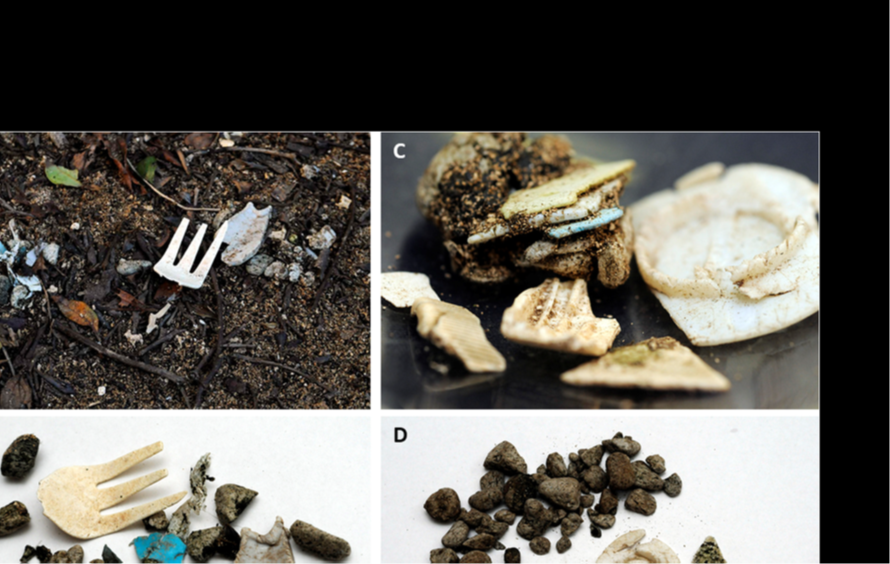
"Examples of Flesh-footed Shearwater boluses containing anthropogenic debris on Lord Howe Island. Panels A/B and C/D show the same bolus intact (top
panel) and separated into components in the lab (bottom panel). Photo: S. Stuckenbrock". From the publication
Alex Bond (Bird Group, The Natural History Museum, Tring, UK) and colleagues have published in the Marine Pollution Bulletin showing that 100% of examined boluses from Flesh-footed Shearwaters Ardenna carnepeis (Near Threatened) from Australia's Lord Howe Island contained plastic items.
The paper’s abstract follows:
“Plastic production and pollution of the environment with plastic items is rising rapidly and outpacing current mitigation measures. Success of mitigation actions can only be determined if progress can be measured reliably through incorporation of specific, measurable targets. Here we evaluate temporal changes in the amount and composition of plastic in boluses from Flesh-footed Shearwaters during 2002–2020 and assess their suitability for measuring progress against national and international commitments to reduce plastic pollution. Plastic in the shearwater boluses showed a generally decreasing pattern from 2002 to 2015 and increasing again to 2020. The colour and type of plastics in boluses was comparable to items recovered from live and necropsied birds, but a much smaller sample size (~35 boluses/year) was required to detect changes in plastic number and mass over time. We therefore suggest shearwater boluses are a low-effort, high-statistical power monitoring tool for quantifying progress against environmental policies in Australia.”

The problem: Flesh-footed Shearwaters ingest large amounts of plastic, photograph by Ian Hutton
With thanks to Janine Dunlop, Niven Librarian, FitzPatrick Institute, University of Cape Town.
Reference:
Bond, A.L., Hutton, I. & Lavers, J.L. 2021. Plastics in regurgitated Flesh-footed Shearwater (Ardenna carneipes) boluses as a monitoring tool. Marine Pollution Bulletin doi.org/10.1016/j.marpolbul.2021.112428.
John Cooper, ACAP Information Officer, 09 May 2021

 Español
Español  English
English  Français
Français